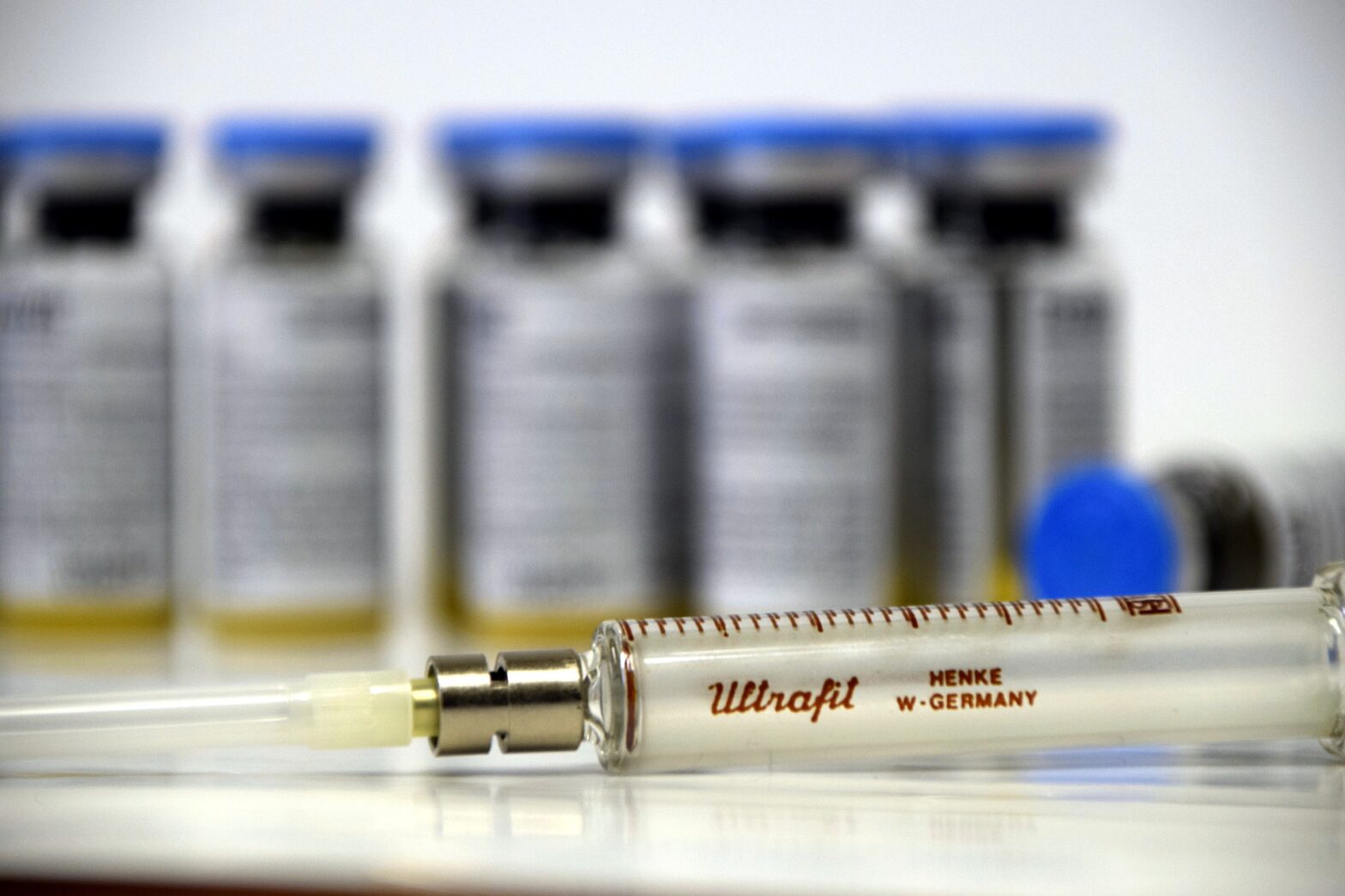IUI vs. IVF – Which Is Right For You

One question I get from many of my clients, and see in fertility support groups on social media, is whether to pursue Intrauterine Insemination (IUI) or In-Vitro Fertilization (IVF) as your path to pregnancy.
Will the procedures work? Is IUI a waste of money? Is IVF worth all the extra time, money and invasiveness you’ll go through by using it to get a baby?
In this post I break down these procedures and lay out some things for you consider when faced with the decision of deciding between these two options.
What Is IUI
IUI, commonly referred to as artificial insemination, is the process of taking your partner’s sperm and manually placing it, through a catheter, at your cervix, directly into your uterus. Doing this puts the sperm closer to where they need to be to increase chances of conception.
The sperm still need to travel through the uterus and fallopian tubes to meet the egg, and fertilization, conception and implantation in the uterus all still occur naturally. But in IUI, the sperm bypass the hostile vaginal environment, where many sperm die en route to the egg.
While IUI is a relatively simple procedure, it can still be used in conjunction with medications such as clomid or injectable FSH (gonal F, bravelle or Follistim) to increase stimulation to the ovaries and facilitate follicle growth, if your doctor recommends. Or, it can be a standalone procedure without ovarian stimulation.
In the reproductive medicine world, IUI is considered low-tech. It’s a common “first option” for couples attempting assisted reproduction.
IUI Considerations
Here are a few things to think about when considering IUI.
IUI is not an invasive procedure
If you want a procedure that increases the chances of a natural conception happening, and want minimal invasion to your body, IUI is the procedure for you. IUI typically involves visits to the doctor during the follicular phase to monitor how your follicles are growing, and when the time is right, you administer a medication to trigger ovulation.
The actual procedure only takes a few minutes to complete, and you’re awake the entire time. For the IUI procedure you lie down on a table and put your feet in stirrups, and it feels like having a pap smear.
After the IUI, you’re usually advised to remain laying down for 5-10 minutes. After that time, there might be slight cramping so you may need to take it easy a bit, but you can usually go about your regular business.
I did my first IUI over a lunch break – I left work for the procedure, and afterwards went back to work for the afternoon!
IUI relies on your own natural ovulation
With IUI, ovulation still occurs. The cycle is spent monitoring growth of your follicles, and when they’re mature and bloodwork indicates that ovulation is imminent, the procedure is scheduled.
The goal is to have an IUI procedure as close to your natural ovulation as possible. Since the sperm are being deposited directly into your uterus, they’ll need less time to travel to the egg. You want the egg to be there waiting for them. So, correctly timing an IUI procedure is critical.
In IUI, it can take a few cycles to get the timing right
As previously mentioned, timing is key with IUI. Since it relies on your natural ovulation, and ovulation can be a moving target, it’s really important to nail the timing. Sometimes it can take a few cycles for your doctor to get the timing right, and so chances are slim for success on the first cycle. It’s reasonable to expect to do multiple IUI cycles before achieving a pregnancy. I conceived my son on the fourth cycle.
What is IVF
In Vitro Fertilization is a multi-step process consisting of
- Ovarian stimulation to produce several eggs;
- Retrieval of the eggs while the patient is under anesthesia;
- Fertilization of the eggs in a lab; and
- Transfer of the resulting embryos back into the uterus OR freezing them for further use
While breaking the IVF down into these steps makes it sound like a simple procedure, it’s actually quite involved.
Considerations for IVF
Just as with IUI, there are many things to consider when deciding if IVF is the right path for you.
IVF is more involved
While IUI relies on your natural ovulation, IVF is a more manipulated procedure. When you do IVF, you’re given medication to suppress ovulation from occurring. You’re under supervision during your entire cycle and every step is closely monitored by your medical team.
During follicle growth, you’re closely monitored to make sure that your eggs are retrieved at exactly the right time to increase their chances of fertilization in the lab. When it’s time to retrieve the eggs, plan on dedicating an entire day. If you work, take a sick day that day. Egg retrieval is considered surgery and you will be under anesthesia. You won’t be able to drive home afterwards. Plan on convalescing for the rest of the day after your egg retrieval procedure. Prepare a meal in advance to have after your egg retrieval, as you’ll likely be too tired to cook. After egg retrieval, you’ll just want to rest.
In IVF, more eggs is the goal
As previously stated, IUI relies on your natural ovulation. Typically in a natural ovulation, one egg at a time is released from your ovary.
IVF, however, is a numbers game. The goal with IVF is for the patient to harvest as many eggs as possible.
Harvesting more eggs means that the doctors have more to work with. The more eggs that are retrieved, the more eggs will fertilize in the lab. The more eggs that are fertilized, the chances are greater of having more viable embryos. The more viable embryos there are, the chances of successful implantation in the uterus, which leads to successful pregnancy.
The manipulation of your cycle, coupled with all of the medications that you’ll be taking to grow your eggs, allows for harvesting large quantities of eggs.
Some patients retrieve as many as 12 eggs and have only one of them become an actual baby. So by the rule of sheer attrition, by having more to start with, there could be a greater chance of success.
In IVF, the two-week wait is shorter
In an IVF procedure, embryos are transferred back into the uterus for (hopefully) implantation. The embryos are anywhere from 3 to 6 days old when this happens, so the time after transfer before you can take a reliable blood pregnancy test is cut by that amount of time. Since IUI consists of a natural conception, the standard two weeks applies from the time of ovulation before you’ll know if your cycle worked.
With IVF, you’re not actually waiting less, but you’re doing more waiting at the front end, before your transfer.
IVF increases chances of multiples
As mentioned previously, IVF is a numbers game. You want more eggs and embryos to work with. It’s not uncommon to transfer two or even three embryos back into your uterus to increase the chances that one of them will successfully implant.
When this is done, however, more than one embryo could implant and you’ll end up with fraternal twins or high-order multiples.
Again, this is the principle of statistics at work.
IVF also can take multiple cycles to work
Just as with IUI, it might not work the first time. While IUI is all about nailing the timing, in IVF it’s about tweaking your treatment protocol. You’re taking a lot of different medications that work together and everyone reacts to medications differently. It may take more than one cycle for your doctor to determine which combination of medications works best for you.
In a nutshell, IVF is much more involved than IUI. You’re taking more medications that do different things, you have more monitoring appointments at the doctor, and you will undergo a surgery under anesthesia.
How to know whether to do IVF or IUI
I had originally titled this section as ‘Pros and Cons” – as in, attributes and drawbacks of both IUI and IVF.
As I kept writing, though, I knew that it would not be this simple. The key to deciding which procedure is right for you is to really look at your own unique medical situation, your financial situation, your overarching goal in having fertility treatment, and tap into your intuition.
IUI and IVF: Success Rates
We undergo fertility treatments because we’re having trouble conceiving and need medical help. IUI and IVF are both viable medical options, but success rates tend to be higher for IVF, so IVF gets the edge on this one.
Understand Your Own Unique Situation
We are all different and these procedures aren’t meant to be a cookie-cutter approach to solving reproductive issues. What is the right path for one woman may not work for another, and even the same woman’s situation may change over time as she ages or her medical situation changes.
Generally speaking, if you have blockages or other issues with your fallopian tubes, IUI may not be possible and you may need to move straight to IVF. If you know you want multiples, you may elect to pursue IVF. If you know you want as close to a natural conception as possible, or don’t want to take a lot of medications and a less invasive procedure, IUI may be the right answer for you.
Other factors, such as your age, test results, hormone levels or other aspects of your medical situation are also things to consider, and will also inform your doctor’s recommendation.
Both IUI and IVF work with male-factor infertility
If your fertility issues as a couple lie primarily with your partner, you can be successful with either procedure. Both IUI and IVF involve collecting a semen sample from your partner and use a process called sperm washing,which concentrates the best possible sperm for possible fertilization. The slow swimmers or sperm that are misshapen are weeded out. It’s essentially a process of Darwinian selection to give you the best possible sperm to increase chances of conception.
IVF also can add a process calledIntracytoplasmic Sperm Injectionduring the fertilization process in the lab. In this process, sperm are directly injected into the egg for manual fertilization. This procedure is commonly used during IVF procedures when male factor infertility is an issue.
Neither IUI nor IVF is a guarantee
When doing fertility treatment, it’s easy to get caught up in all the medications and procedures. It’s important to remember that all methods of assisted reproduction are designed to help you increase your chances of getting pregnant. They’re not guaranteed to work, and they’re not a panacea. With IVF it’s especially important to remember this.
Financial Considerations for IUI and IVF
Since IUI relies on fewer medications, less monitoring overall, and is primarily a facilitator of natural conception, it’s not as involved a procedure, and accordingly it’s a lot less costly, so the edge goes to IUI financially.
If finances are a consideration for you – and they’re a consideration for most of us – this is something to think about.
At the same time, if you do several IUI cycles without success, eventually you might pay what you would have paid for a single IVF cycle. And if you end up moving on to IVF anyway, the dollars can really add up. So it’s important to consider when making your conception plan, how many cycles of IUI you’ll try before moving on. Most doctors suggest that if you haven’t had success after three or four cycles, it’s time to move on to other options.
We can be armed with all the research, statistics, information, our medical diagnosis and doctor’s recommendation but it still may not tell us the whole story.
Wrapping Up
When you’re debating whether to do IUI or IVF, or to do IUI first before trying IVF, or skipping IUI and heading straight to IVF, recognize that this is a big decision. Do your research, arm yourself with the information and knowledge, discuss with your partner and your medical team, and give yourself some grace.
IUI and IVF are very different procedures but both have the same goal – to get you pregnant. We’re fortunate that science has advanced so much in the past 40 years to give us these incredible options.



